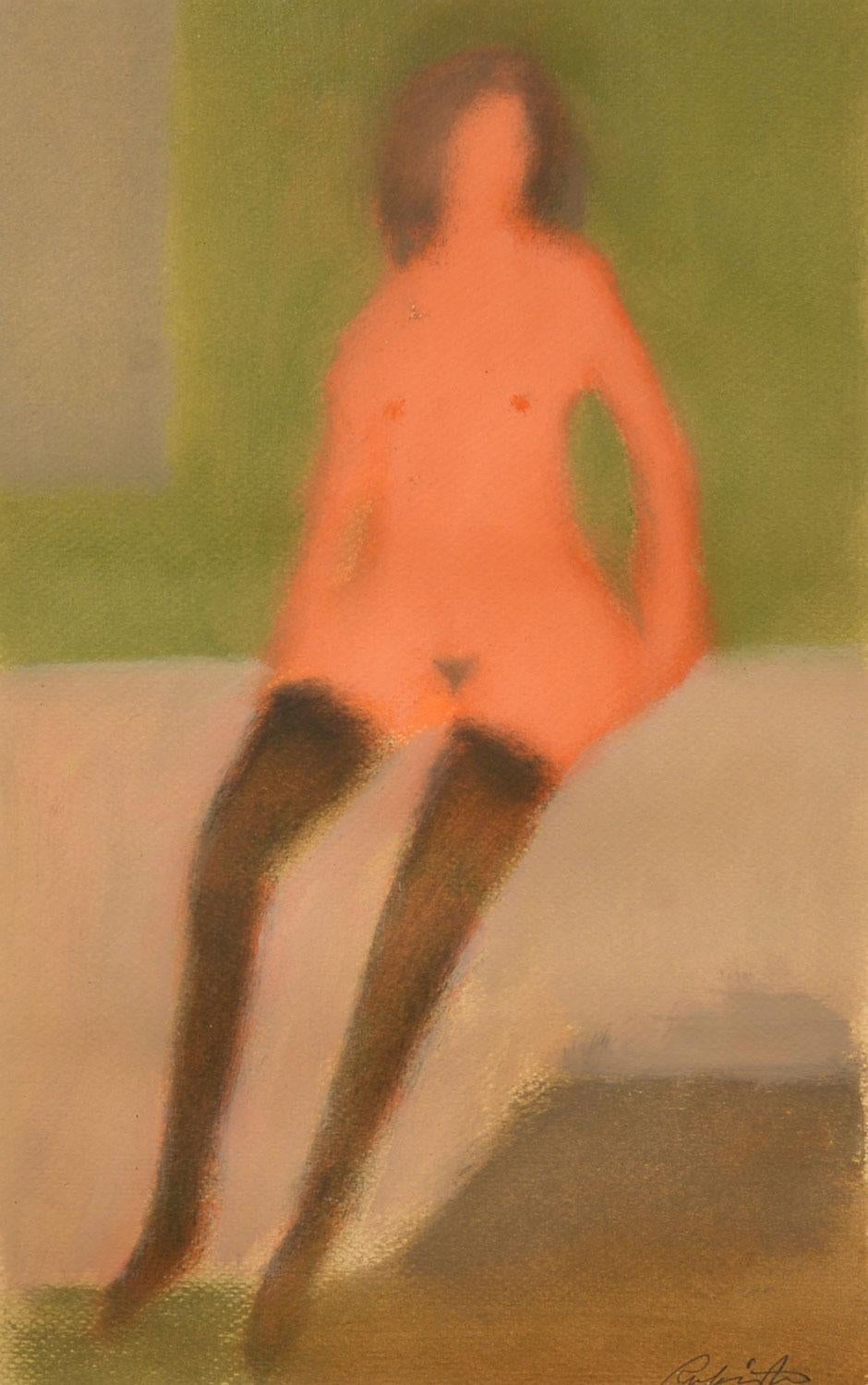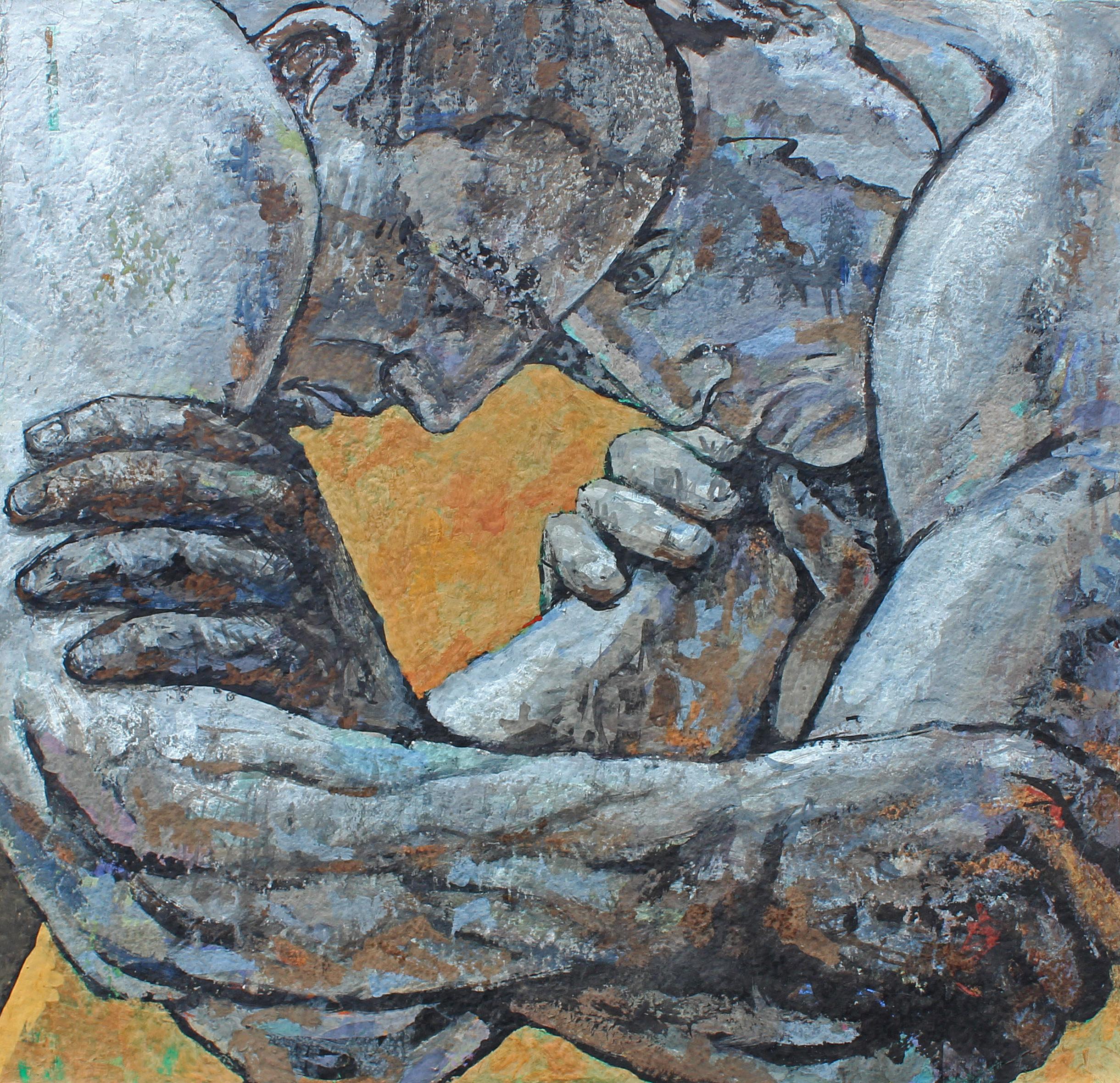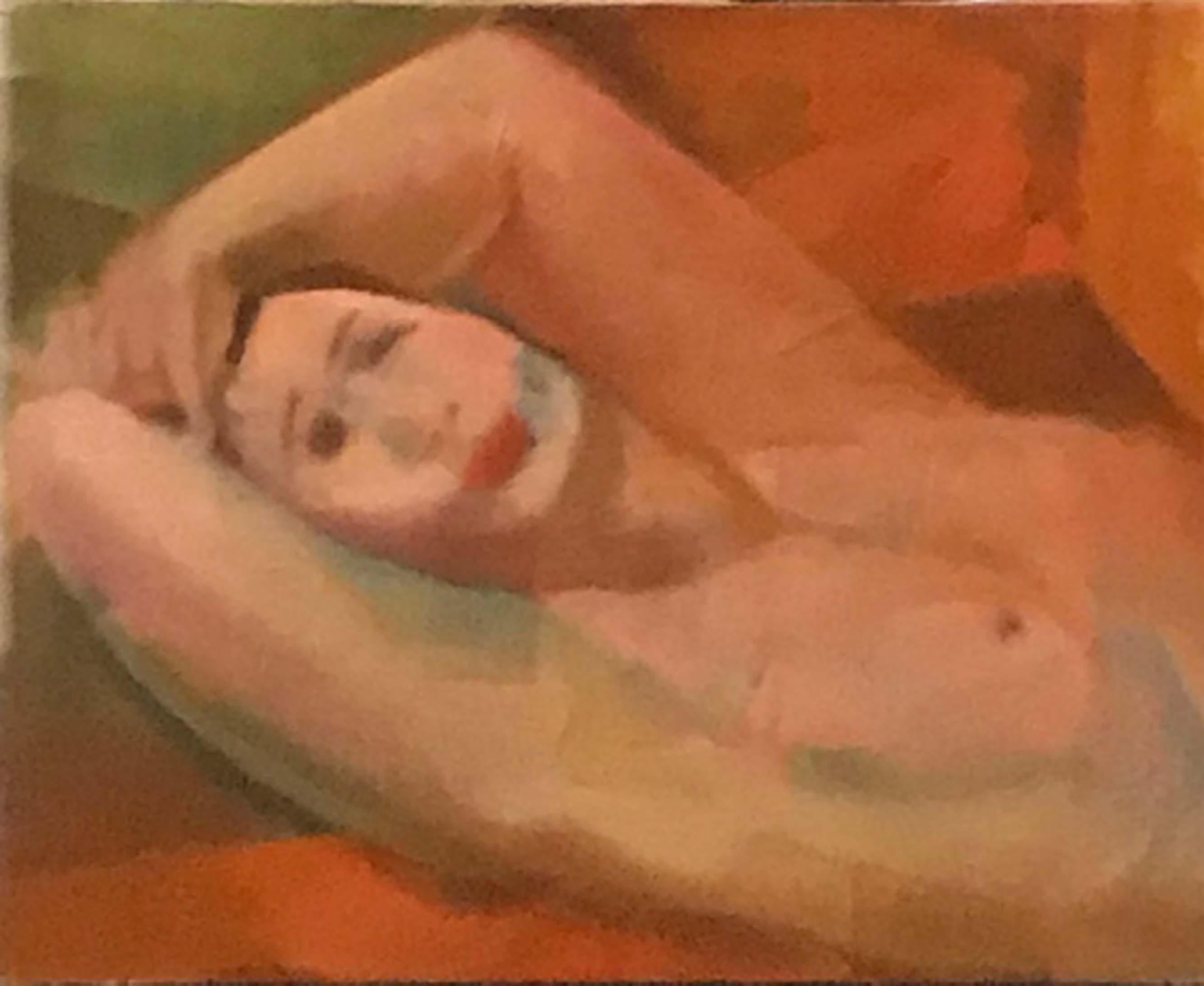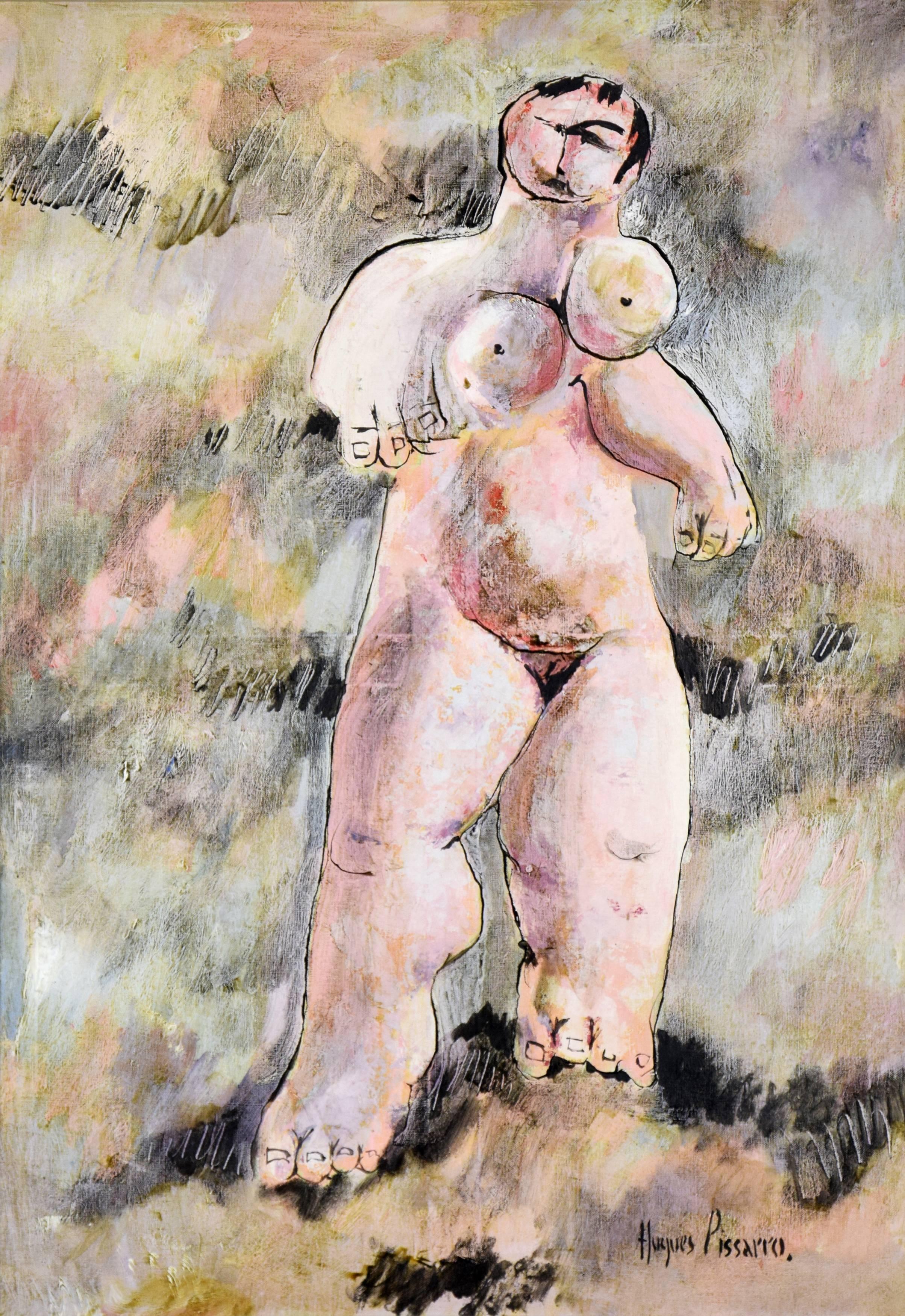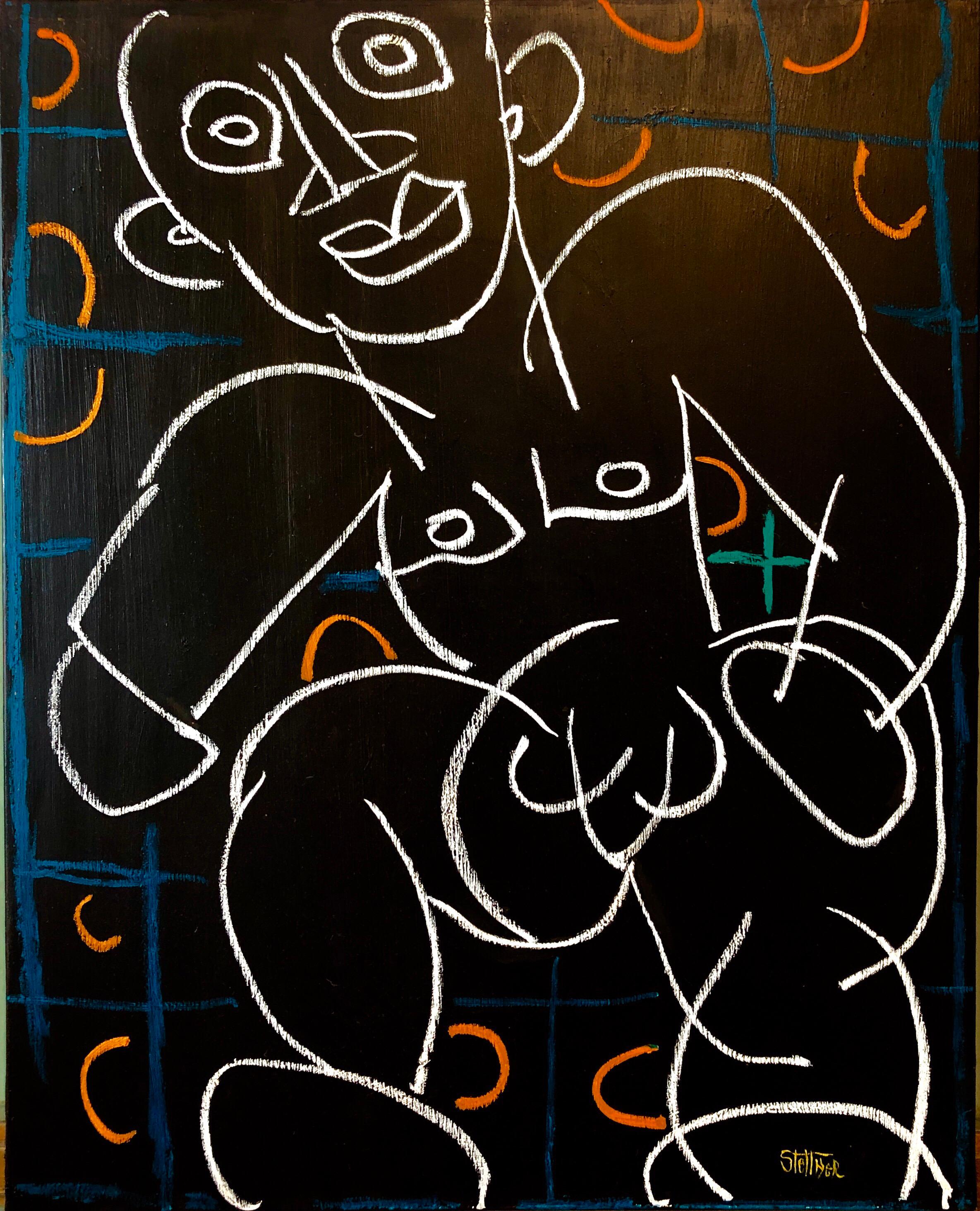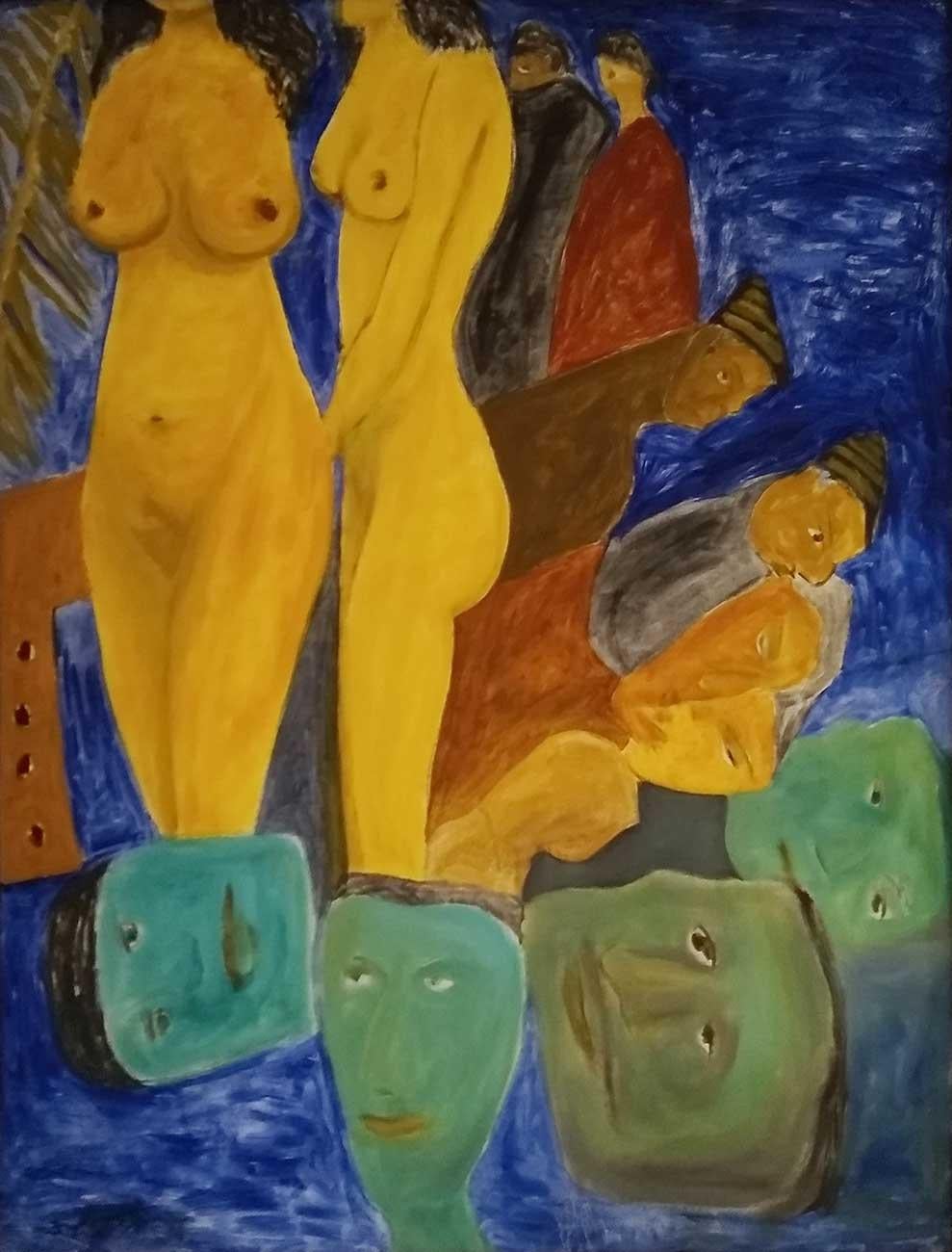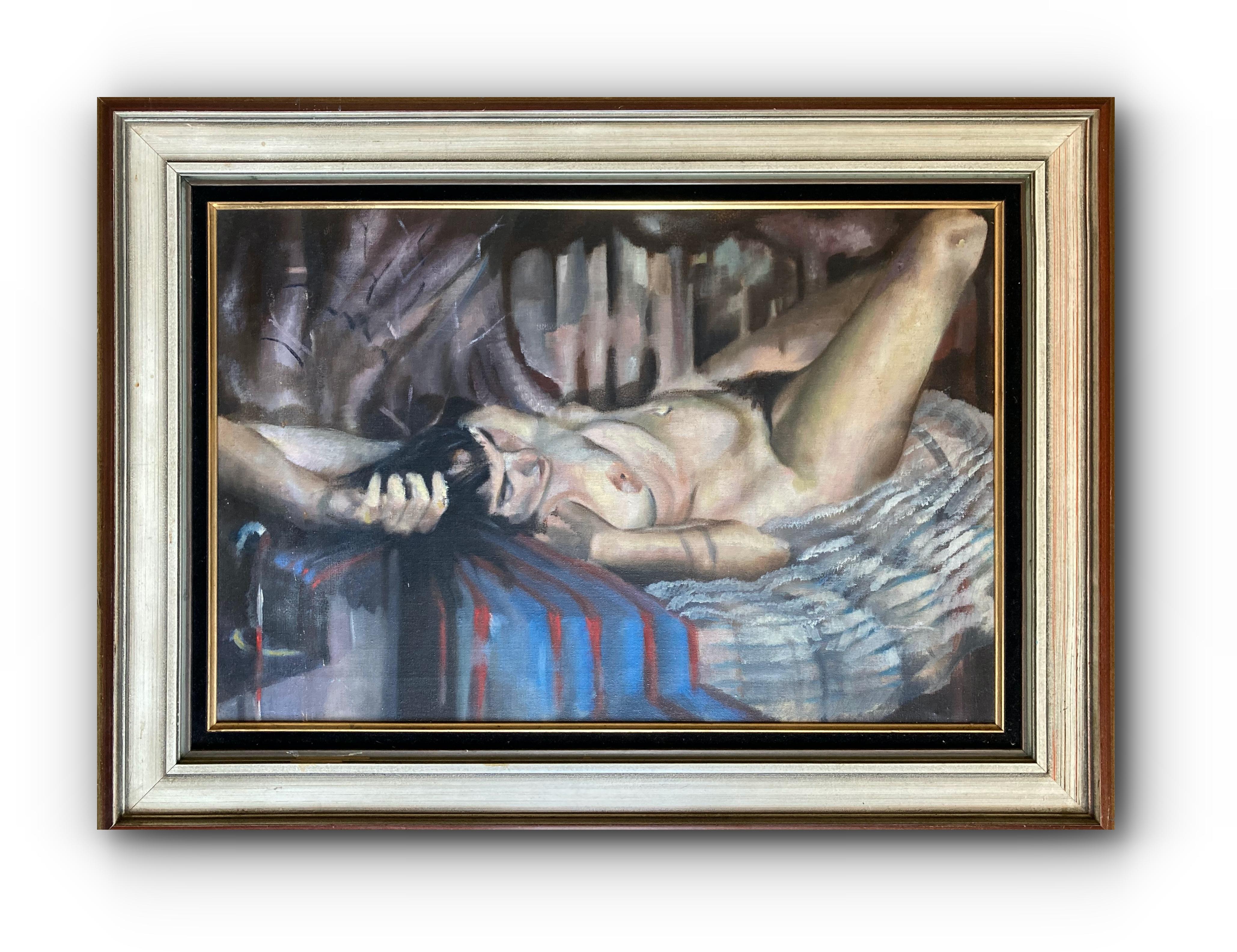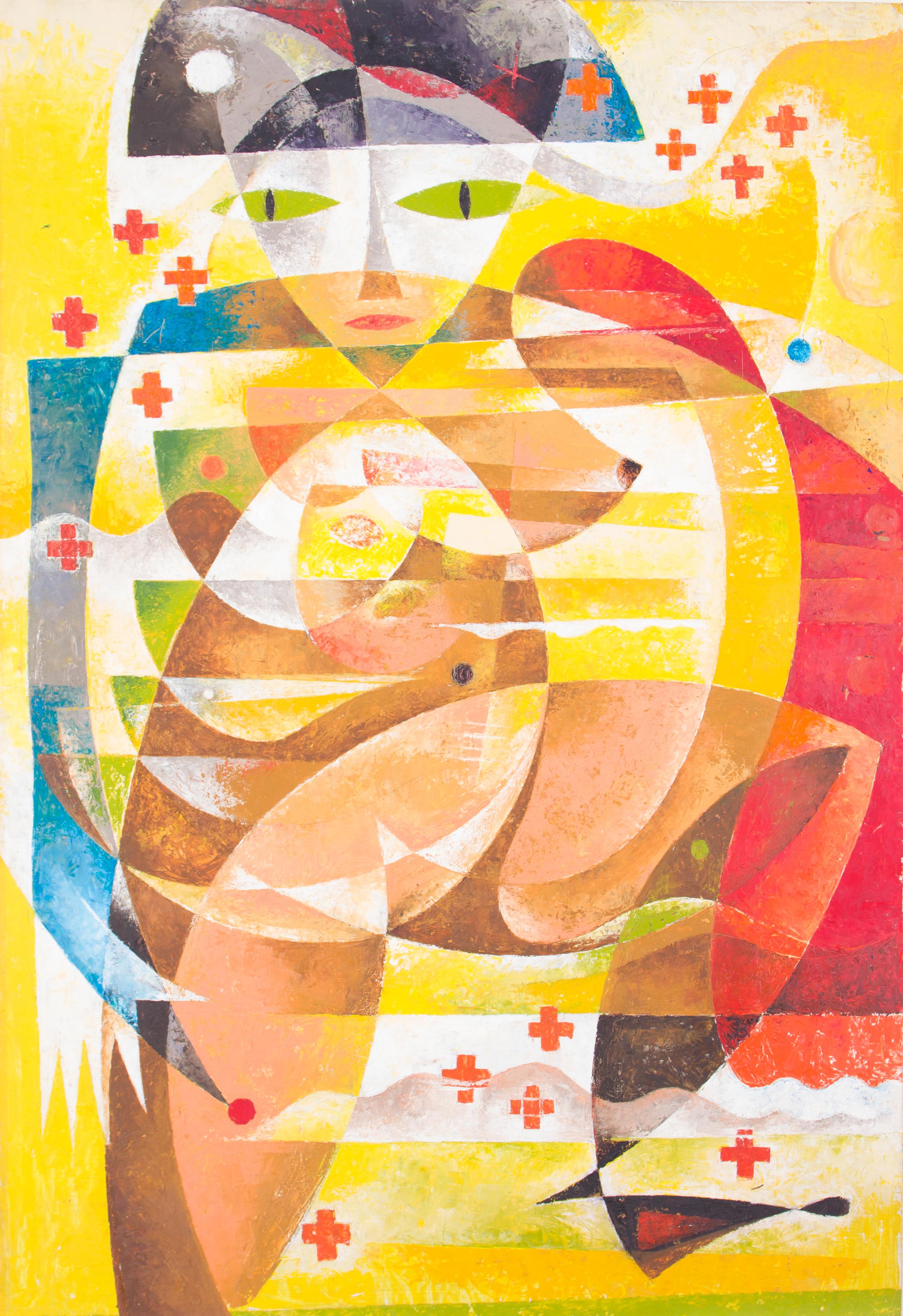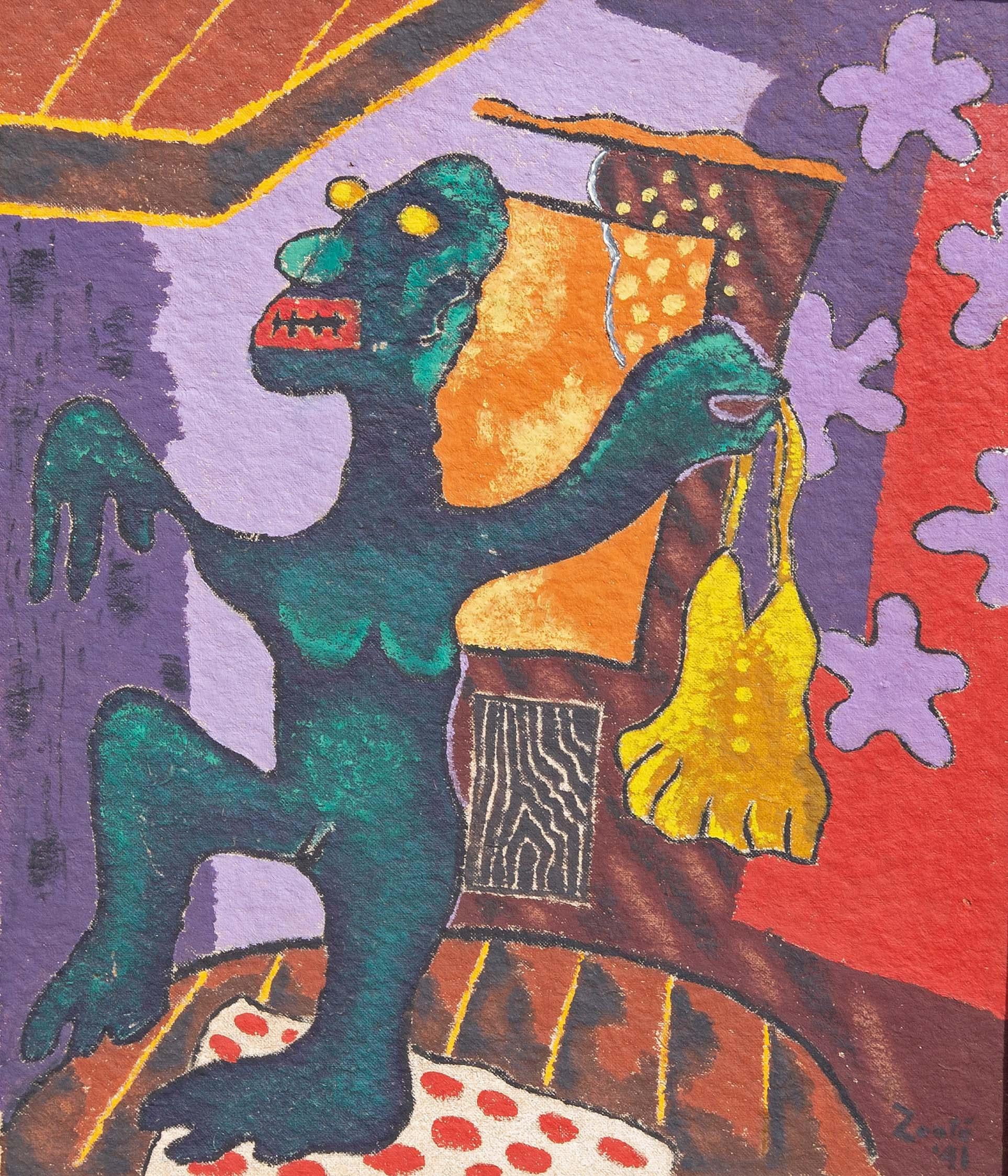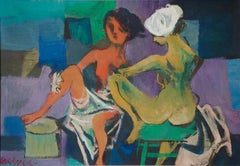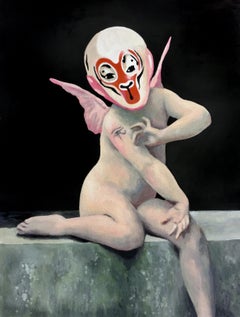
LuchadorPutte, , 21st century, modern, nude, mask, japanese,
View Similar Items
1 of 4
Tanja HirschfeldLuchadorPutte, , 21st century, modern, nude, mask, japanese, 2018
2018
About the Item
- Creator:Tanja Hirschfeld (1971)
- Creation Year:2018
- Dimensions:Height: 11.82 in (30 cm)Width: 11.82 in (30 cm)
- Medium:
- Movement & Style:
- Period:
- Condition:
- Gallery Location:Munich, DE
- Reference Number:1stDibs: LU106714060061
You May Also Like
- "Seated Nude, " Norman Rubington, oil on paper, Mid-Century, Hirschhorn MuseumBy Norman RubingtonLocated in Wiscasset, MEBorn in New Haven, Connecticut in 1921, artist Norman Rubington studied at the Yale School of Fine Arts and Ecole des Beaux Arts in Paris where he participated in a number of group exhibitions and his first solo show at the Salon d'Automne in 1948, which received high acclaim. Following his studies, he returned to the States and exhibited in a series of shows in Boston, New York and San Francisco. Rubington was awarded a grant from the Tiffany Foundation, a Guggenheim Fellowship, the Prix de Rome prize and was a fellow of the McDowell Art Colony in New Hampshire. Rubington exhibited at the Salon d'Automne, Paris, City Center, New York, Carl Siembab Gallery, Boston, Berman Museum of Art, Pennsylvania, American Academy, Rome, Museum of Fine Arts, San Francisco, Corcoran Gallery, Washington D.C., Art Institute of Chicago, American Art Gallery, Copenhagen, Rome Art Club, and Museo Berera, Milan. Rubington's work is held in numerous private and public collections including permanent collections of the J.H. Hirschhorn Museum, Washington, D.C., San Francisco Museum of Art, San Francisco, CA, Obelisk Gallery, London, Court Gallery, Copenhagen, Grace Cathedral...Category
Mid-20th Century Modern Figurative Paintings
MaterialsOil, Paper
- Greco Roman Classical Wrestlers Oil PaintingLocated in Rochester, NYLate 20th century modernist oil painting of Greco Roman wrestlers done in the classical style. By David Loeb. Oil on handmade paper. Signed on reverse and dated 1989. Loeb was born in 1953 and raised in Chappaqua, New York, David Loeb’s mother and her identical twin were painters, and he has been painting since childhood. He studied with Gillian Pederson-Krag at Cornell University; Reed Kay at Boston University; Louis Finkelstein, Wolf Kahn and Philip Guston at the Yale Summer School of Art and Music; and attended graduate school at Indiana University, Bloomington, where he studied with Robert Barnes...Category
20th Century Modern Figurative Paintings
MaterialsOil, Handmade Paper
- BathersBy William GropperLocated in West Hollywood, CAWe are proud to present outstanding original oil on canvas by American artist William Gropper (1897-1977.) William Gropper was an artist and illustrator, known for his exceptional a...Category
1940s American Modern Figurative Paintings
MaterialsOil
- En ReposeBy Sam AmatoLocated in West Hollywood, CABorn in New York in 1924, Sam Amato became a key painter in the Southern California (Los Angeles) figurative school of painting of the 1960's and '70's, best known for his diverse su...Category
1950s Modern Figurative Paintings
MaterialsOil
Price Upon Request - Nu Debout by HUGUES PISSARRO - Nude Painting, Human Figure, Oil on Canvas, ArtBy Hughes Claude PissarroLocated in London, GBNu Debout by HUGUES PISSARRO (b. 1935) Oil on canvas 92 x 65 cm (36 ¼ x 25 ⅝ inches) Signed lower right, Hugues Pissarro. Dated on the reverse, Monte-Carlo 1963 and inscribed, Hugu...Category
1960s Modern Figurative Paintings
MaterialsOil
- Rare Modernist Oil Painting Line Drawing Nude Man Louis StettnerBy Louis StettnerLocated in Surfside, FLSigned and Dated Modern Line Drawing Oil Painting of Nude Man. Louis Stettner (November 7, 1922 – October 13, 2016) was an American photographer of the 20th century whose work included streetscapes, portraits and architectural images of New York and Paris. His work has been highly regarded because of its humanity and capturing the life and reality of the people and streets. Starting in 1947, Stettner photographed the changes in the people, culture, and architecture of both cities. Stettner also spent significant time sculpting and painting, as well as mixing his work and “painting” on some of his photographic images. He continued to photograph New York and Paris up until his death. Louis Stettner was born in Brooklyn, New York, to Austrian immigrant parents where he was one of four children. His father was a cabinet maker, and Louis learned the trade when young, using the money he earned to support his growing love of photography. He decides to be a photographer after seeing photographs by Alfred Stieglitz and Weegee. He was given a box camera as a child, and his love affair with photography began. His family went on trips to Manhattan and visited museums, including the Metropolitan Museum of Art, where his love of art began. At 18, in 1940, Stettner enlisted in the United States army and became a combat photographer in Europe for the Signal Corps. After a brief stint in Europe he was sent to New Guinea, the Philippines, and Japan. Back from the war he joined the Photo League in New York. Through the Photo League’s exhibits, Stettner was further exposed to the work of Weegee, Edward Weston, and Lewis Hine. Stettner visited Paris in 1946 and in 1947 moved there. From 1947 to 1949 he studied at the "Institut des Hautes Études Cinématographiques" in Paris and received a Bachelor of Arts in Photography & Cinema. He went back and forth between New York and Paris for almost two decades and finally settled permanently in Saint-Ouen, near Paris, in 1990. Stettner still frequently returned to New York. Stettner's professional work in Paris began with capturing life in the post-war recovery. He captured the everyday lives of his subjects. In the tradition of the Photo League, he wanted to investigate the bonds that connect people to one another. In 1947 he was asked by the same Photo League to organize an exhibition of French photographers in New York. He gathered the works of some of the greatest photographers of the era, including Robert Doisneau, Brassaï, Edouard Boubat, Izis Bidermanas, and Willy Ronis. The show was a big success and was largely reviewed in the annual issue of U.S. Camera. Stettner had begun a series of regular meetings with Brassaï who was a great mentor and had significant influence on his work. In 1949, Stettner had his first exhibition at the "Salon des Indépendants" at the Bibliothèque Nationale, Paris. In 1951 his work was included in the famous Subjektive Fotografie exhibition in Germany. During the 1950s he free-lanced for Time magazine, Life, Fortune, and Du (Germany). While in Paris he reconnected with Paul Strand, who had also left New York because of the political intolerance of the McCarthy era—Strand had been a founder of the Photo League that would be blacklisted and then banned during those years. In the 1970s Stettner spent more time in New York City, where he taught at Brooklyn College, Queens College, and Cooper Union. In his own social realist work, Stettner focused on documenting the lives of the working class in both Paris and New York. He felt that the cities belong to the people who live there, not to tourists or visitors. His upbringing caused him to take great care in capturing the simple human dignity of the working class. He also captured noteworthy architectural images of both cities, including bridges, buildings, and monuments. Stettner produced well-known silver gelatin prints in fine images, including: Aubervilliers, Brooklyn Promenade...Category
21st Century and Contemporary American Modern Figurative Paintings
MaterialsCanvas, Oil
